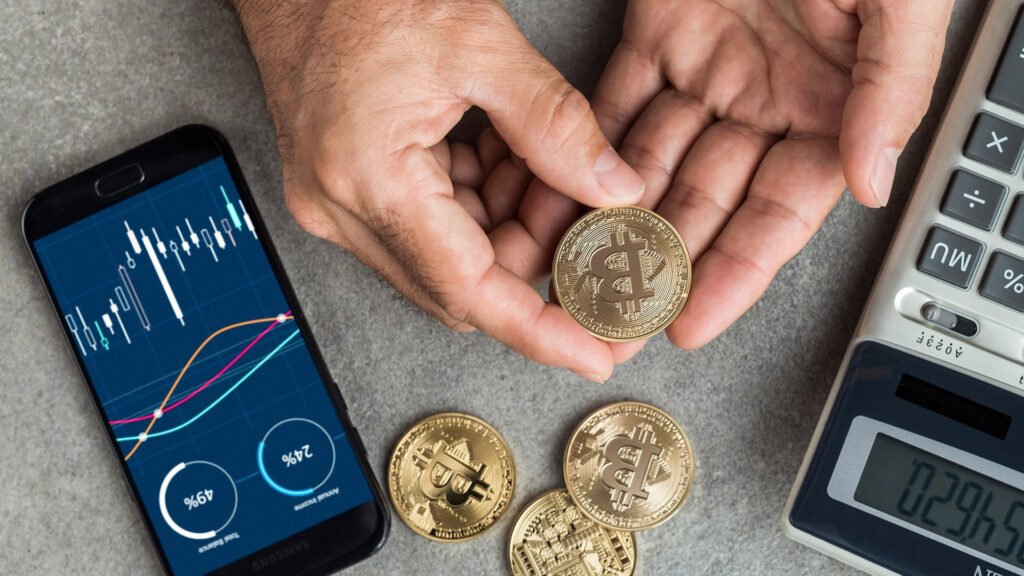Setting up your first cryptocurrency wallet can feel overwhelming, but this comprehensive cryptocurrency wallet setup guide and beginner’s tutorial will walk you through every step of the process. Whether you’re entirely new to digital currencies or just starting your crypto journey, understanding how to set up and secure a cryptocurrency wallet properly is crucial for protecting your investments.
In this detailed guide, you’ll discover the essential steps to create your first crypto wallet, learn about different wallet types, and implement security best practices that will keep your digital assets safe. By the end of this cryptocurrency wallet setup guide, beginner’s article, you’ll have the confidence to choose, set up, and manage your cryptocurrency wallet like a pro.
The cryptocurrency market has exploded in recent years, with Bitcoin reaching new all-time highs and thousands of altcoins entering the market. However, with great opportunity comes great responsibility, and proper wallet setup is your first line of defence against potential losses.
Cryptocurrency Wallets: The Foundation of Digital Asset Security
Before diving into the setup process, it’s essential to understand what a cryptocurrency wallet is and why it’s so crucial for your digital asset security strategy.
A cryptocurrency wallet is a digital tool that allows you to store, send, and receive digital currencies like Bitcoin, Ethereum, and other cryptocurrencies. Unlike traditional wallets that hold physical cash, crypto wallets don’t store your coins. Instead, they store the private keys that give you access to your cryptocurrency on the blockchain.
Think of your cryptocurrency wallet as a secure digital keychain that holds the keys to your digital safe deposit boxes. Each cryptocurrency you own has its unique address on the blockchain, and your wallet manages the private keys that prove ownership of those addresses.
Types of Cryptocurrency Wallets Every Beginner Should Know
Understanding the different types of wallets available is crucial for making an informed decision about which option best suits your needs and security requirements.
Hot Wallets are connected to the internet and offer convenience for frequent transactions. These include:
- Mobile wallet apps like Trust Wallet and Coinbase Wallet
- Desktop software wallets such as Exodus and Electrum
- Web-based wallets accessible through browsers
Cold Wallets are offline storage solutions that provide maximum security:
- Hardware wallets like Ledger Nano S/X and Trezor
- Paper wallets (though less common today)
- Air-gapped computers with wallet software
Custodial vs Non-Custodial Wallets represent different levels of control:
- Custodial wallets are managed by third parties (exchanges)
- Non-custodial wallets give you complete control over your private keys
Cryptocurrency Wallet Setup Guide for Beginners: Step-by-Step Process

Now that you understand the basics, let’s walk through the actual setup process. This section will cover the most beginner-friendly approach to getting your first wallet up and running safely.
Choose Your Wallet Type Based on Your Needs
For beginners, we recommend starting with a reputable mobile wallet app that offers a good balance of security and usability. Popular options include:
Trust Wallet: Supports over 4.5 million cryptocurrencies and tokens, with built-in DeFi features and a user-friendly interface.
MetaMask: Excellent for Ethereum and Ethereum-based tokens, with browser extension and mobile app versions available.
Coinbase Wallet: User-friendly interface with educational resources, perfect for beginners who want to learn while they manage their crypto.
Download and Install Your Chosen Wallet
Once you’ve selected your wallet, follow these security-focused installation steps:
- Download only from official sources: Visit the official website or verified app store listings
- Verify the developer: Check that the legitimate company publishes the app
- Read recent reviews: Look for any red flags in user feedback
- Check permissions: Ensure the app only requests necessary permissions
Create Your New Wallet Account
When creating your wallet account, you’ll typically encounter these essential steps:
Set a Strong Password: Use a combination of uppercase and lowercase letters, numbers, and special characters. Consider using a password manager to generate and store a unique, complex password.
Enable Two-Factor Authentication (2FA): If available, always enable 2FA using an authenticator app like Google Authenticator or Authy.
Generate Your Recovery Phrase: This is perhaps the most critical step in the entire setup process.
Understanding and Securing Your Recovery Phrase
Your recovery phrase (also called a seed phrase or mnemonic phrase) is a series of 12, 15, 18, or 24 words that can restore access to your wallet if you lose your device or forget your password. This phrase is essentially the master key to your cryptocurrency holdings.
Critical Recovery Phrase Security Tips:
- Write it down on paper: Never store your recovery phrase digitally or take a photo of it
- Use multiple copies: Create 2-3 written copies and store them in different secure locations
- Consider metal storage: For long-term storage, consider engraving your phrase on metal plates
- Never share it: Your recovery phrase should never be shared with anyone, ever
- Test your backup: Before transferring significant funds, test that your recovery phrase works
Advanced Wallet Security Measures for Beginners
Once you have your basic wallet set up, implementing additional security measures will help protect your investment from various threats.
Setting Up Multi-Signature Security
Multi-signature (multisig) wallets require multiple private keys to authorise transactions, adding an extra layer of security. While more complex, they’re worth considering as your crypto holdings grow.
Implementing Transaction Limits and Confirmations
Many wallets allow you to set daily transaction limits and require additional confirmations for large transactions. These features can help prevent unauthorised access and give you time to react if your wallet is compromised.
Regular Security Audits and Updates
Cryptocurrency security is an ongoing process that requires regular attention:
- Update your wallet software regularly: New versions often include critical security patches
- Monitor your accounts: Check your balances and transaction history frequently
- Review connected applications: Periodically audit which applications have access to your wallet
- Stay informed about threats: Follow cryptocurrency security news and best practices
Common Wallet Setup Mistakes and How to Avoid Them
Learning from common mistakes can save you from costly errors and potential losses.
Mistake 1: Using Weak Passwords or Reusing Passwords
Many beginners use simple passwords or reuse passwords from other accounts. This creates a significant vulnerability that hackers can exploit.
Solution: Use a unique, complex password generated by a password manager specifically for your crypto wallet.
Mistake 2: Storing Recovery Phrases Digitally
Taking screenshots or storing recovery phrases in cloud storage, email, or note-taking apps exposes them to hacking risks.
Solution: Always write recovery phrases on paper and store them in secure, physical locations.
Mistake 3: Not Testing Small Amounts First
Many newcomers transfer large amounts of cryptocurrency without first testing their wallet setup with small transactions.
Solution: Always test your wallet with small amounts before transferring significant funds.
Mistake 4: Ignoring Network Fees and Transaction Times
Different cryptocurrencies have varying fees and confirmation times that can affect your user experience.
Solution: Research the typical fees and transaction times for your chosen cryptocurrencies before making transfers.
Choosing the Right Wallet for Different Cryptocurrencies
Different cryptocurrencies may require different wallet solutions, and understanding these requirements is crucial for proper setup.
Bitcoin-Specific Wallet Considerations
Bitcoin wallets focus on security and privacy features:
- Electrum: A Lightweight desktop wallet with advanced features
- Bitcoin Core: Full node wallet for maximum security and privacy
- Samourai Wallet: Mobile wallet with privacy-focused features
Ethereum and ERC-20 Token Wallets
Ethereum-based assets require wallets that support smart contracts:
- MetaMask: Browser extension and mobile app with DeFi integration
- MyEtherWallet (MEW): Web-based wallet with extensive token support
- Argent: Smart contract wallet with social recovery features
Multi-Currency Wallet Solutions
For managing multiple cryptocurrencies, consider wallets that support various assets:
- Exodus: Desktop and mobile wallet with built-in exchange features
- Atomic Wallet: Supports over 500 cryptocurrencies with staking features
- Trust Wallet: Mobile-first wallet with extensive altcoin support
Backup and Recovery Strategies for Your Cryptocurrency Wallet

Proper backup and recovery planning is essential for long-term cryptocurrency storage success.
Creating Comprehensive Backup Plans
A robust backup strategy should include:
Multiple Recovery Phrase Copies: Store written copies in at least two different physical locations, such as a home safe and a bank safety deposit box.
Digital Wallet File Backups: For desktop wallets, regularly back up your wallet files to encrypted external storage.
Documentation: Keep a record of your wallet addresses, the types of cryptocurrencies you hold, and any critical transaction information.
Testing Your Recovery Process
Regularly test your recovery process to ensure your backups work correctly:
- Set up a test wallet: Use a small amount of cryptocurrency to test recovery
- Practice the recovery process: Go through the complete recovery procedure
- Document any issues: Note any problems and resolve them immediately
- Update your backup strategy: Improve your backup method based on your testing results
Managing Multiple Wallets and Addresses
As you become more involved in cryptocurrency, you may need to manage multiple wallets for different purposes. Organisational Strategies for Multiple Wallets
Purpose-Based Separation: Use different wallets for different purposes.
- Long-term storage (cold wallet)
- Daily transactions (hot wallet)
- DeFi activist (specialised DeFi wallet)
- Trading (exchange wallet)
Cryptocurrency-Specific Wallets: Some users prefer separate wallets for different cryptocurrencies to maximise security and functionality.
Address Management: Keep a secure record of all your wallet addresses and their purposes to avoid confusion and potential losses.
Conclusion
Setting up your first cryptocurrency wallet doesn’t have to be intimidating when you follow this comprehensive cryptocurrency wallet setup guide, a beginner’s tutorial. By understanding the different wallet types, implementing proper security measures, and following the step-by-step setup process outlined above, you’re well-equipped to store and manage your digital assets safely.
Remember that cryptocurrency security is an ongoing responsibility that requires regular attention and updates. Start with a reputable wallet that matches your needs, always secure your recovery phrase properly, and gradually implement additional security measures as your cryptocurrency holdings grow.
















